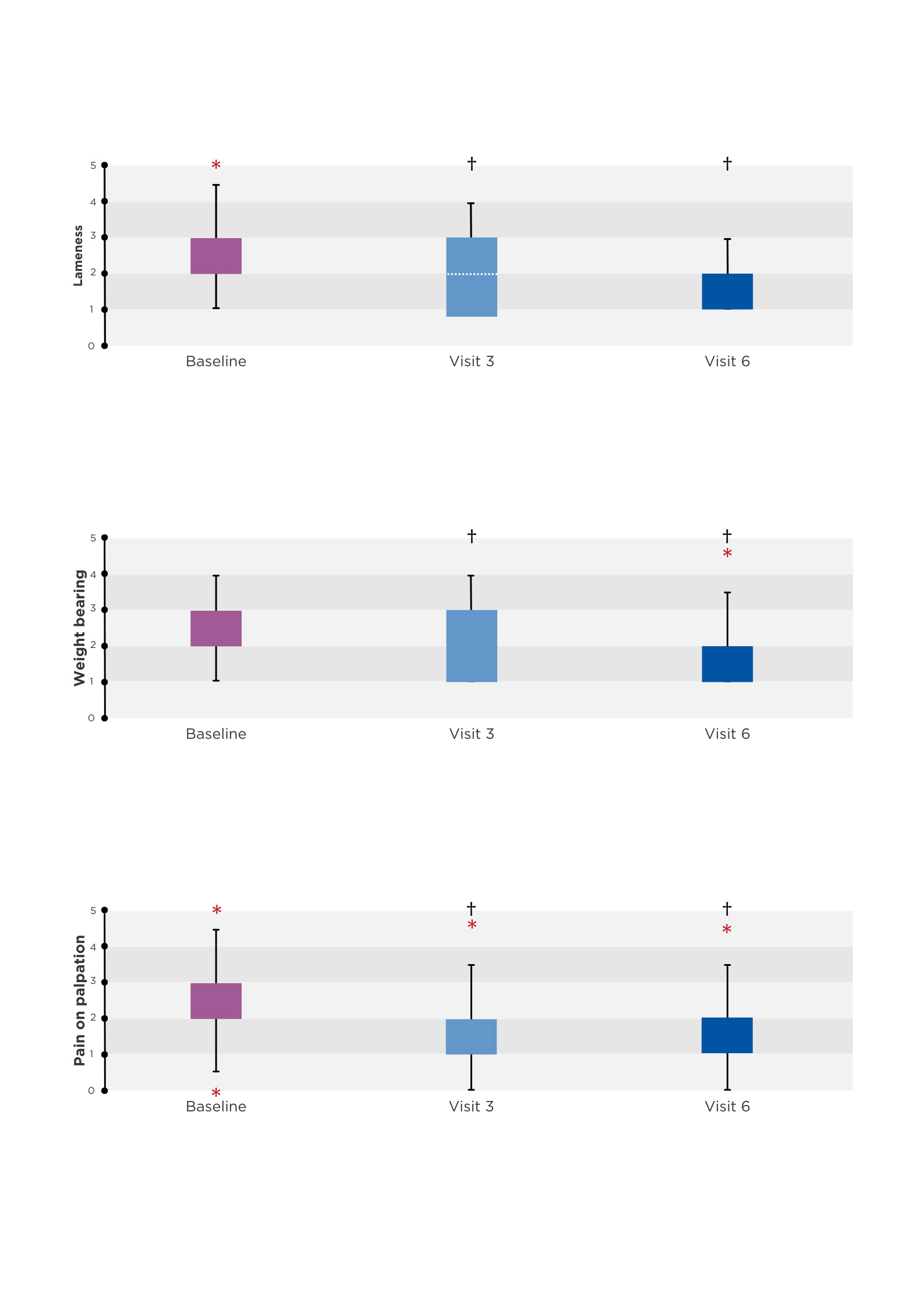Advertorial
28 February 2025
Evidence-based clinical nutrition to support weight management and joint care in dogs

Forty per cent of dogs with osteoarthritis (OA) are obese1. The biomechanical stress of excess weight is thought to be a primary contributor to the pathogenesis and progression of OA. In addition to the biomechanical stress, the constant low-grade inflammation associated with obesity may play a role in the development and progression of OA2,3.
Weight loss has been shown to improve the signs of OA in dogs4–13. Omega-3s from fish oil provide clinical benefit by helping control inflammation and by reducing the expression and activity of cartilage proteoglycan-degrading enzymes14.
Hill’s Prescription Diet Metabolic + Mobility has the nutritional attributes of Hill’s Prescription Diet Metabolic and Hill’s Prescription Diet j/d.
Effectiveness of a dietetic food to achieve weight loss and to improve mobility in client-owned obese dogs with osteoarthritis
Study by Christmann U, Becvarova I, Werre S and Meyer H (2017). J Vet Intern Med 31(237).

Key points
- 89% of the overweight and obese dogs (n = 34) fed with Hill’s Prescription Diet Metabolic + Mobility dry dog food lost weight over 6 months with an average weekly weight-loss rate of 0.5% of starting body weight.
- BCS and BFI decreased significantly over time compared to baseline.
- Owners perceived a significant improvement:
- in rising and playing starting at month 2 of the study.
- and in walking and activity level starting at month 3 of the study.
- Similarly, veterinarians’ assessments revealed a significant improvement in lameness, weight bearing, and pain on palpation starting in month 3 of the study (Figure 1).
- In conclusion, owners and veterinarians reported significant improvements in dog’s weight and mobility without negative side effects.
To further explore the clinical evidence behind Hill’s Metabolic , including Hill’s Prescription Diet Metabolic + Mobility you can read the full clinical evidence report here.
To learn more about the products in the Hill’s metabolic portfolio visit hillsvet.co.uk
References
- Banfield State of Health Report (2012).
- Eisele I, Wood IS, German AJ et al (2005). Adipokine gene expression in dog adipose tissues and dog white adipocytes differentiated in primary culture, Horm Metab Res 37: 474-481.
- Trayhurn P and Wood IS (2004). Adipokines: inflammation and the pleiotropic role of white adipose tissue, Br J Nutr 92: 347-355.
- Moreau M, Troncy E, Bichot S et al (2010). Influence of changes in body weight on peak vertical force in osteoarthritic dogs: a possible bias in study outcome, Vet Surg 39: 43-47.
- Smith GK, Mayhew PD, Kapatkin AS et al (2001). Evaluation of risk factors for degenerative joint disease associated with hip dysplasia in German shepherd dogs, golden retrievers, Labrador retrievers, and rottweilers, J Am Vet Med Assoc 219: 1,719-1,724.
- Huck JL, Biery DN, Lawler DF et al (2009). A longitudinal study of the influence of lifetime food restriction on development of osteoarthritis in the canine elbow, Vet Surg 38: 192-198.
- Runge JJ, Biery DN, Lawler DF et al (2008). The effects of lifetime food restriction on the development of osteoarthritis in the canine shoulder, Vet Surg 37: 102-107.
- Smith GK, Paster ER, Powers MY et al (2006). Lifelong diet restriction and radiographic evidence of osteoarthritis of the hip joint in dogs, J Am Vet Med Assoc 229: 690-693.
- Kealy RD, Lawler DF, Ballam JM et al (2000). Evaluation of the effect of limited food consumption on radiographic evidence of osteoarthritis in dogs, J Am Vet Med Assoc 217: 1,678-1,680.
- Kealy RD, Olsson SE, Monti KL et al (1992). Effects of limited food consumption on the incidence of hip dysplasia in growing dogs, J Am Vet Med Assoc 201: 857-863.
- Marshall WG, Hazewinkel HA, Mullen D et al (2010). The effect of weight loss on lameness in obese dogs with osteoarthritis, Vet Res Commun 34: 241-253.
- Mlacnik E, Bockstahler BA, Muller M et al (2006). Effects of caloric restriction and a moderate or intense physiotherapy program for treatment of lameness in overweight dogs with osteoarthritis, J Am Vet Med Assoc 229: 1,756-1,760.
- Kirkby KA and Lewis DD (2012). Canine hip dysplasia: reviewing the evidence for nonsurgical management, Vet Surg 41: 2-9.
- Caterson B, Flannery CR, Hughes CE et al (2000). Mechanisms involved in cartilage proteoglycan catabolism, Matrix Biology 19: 333-344.

